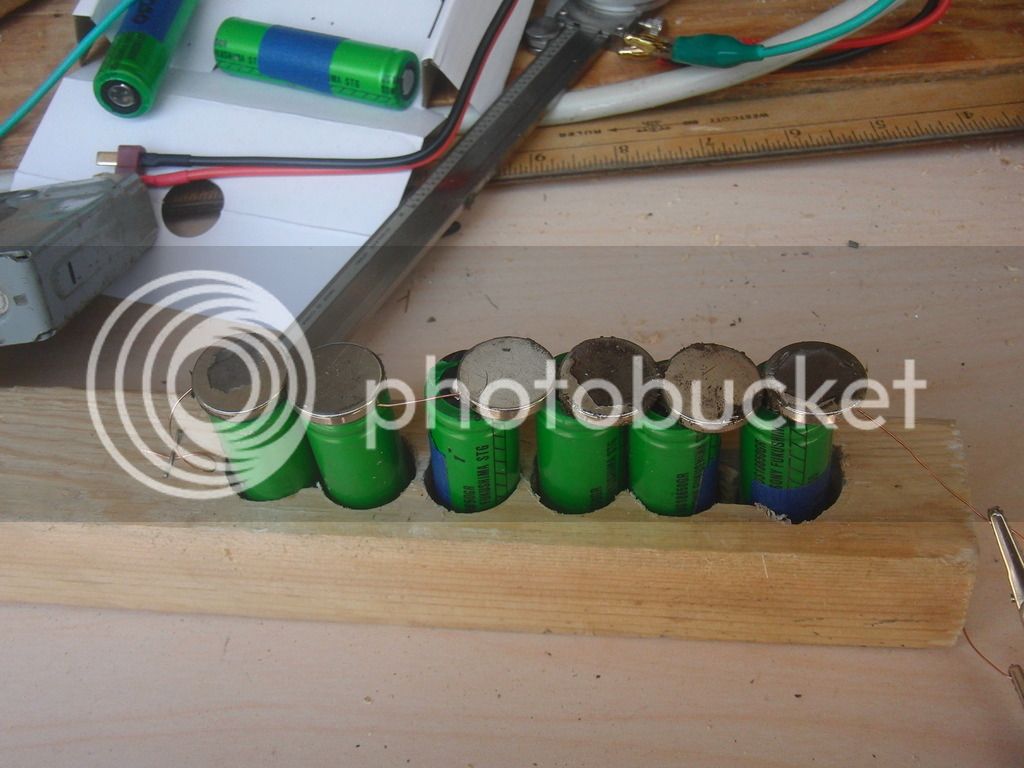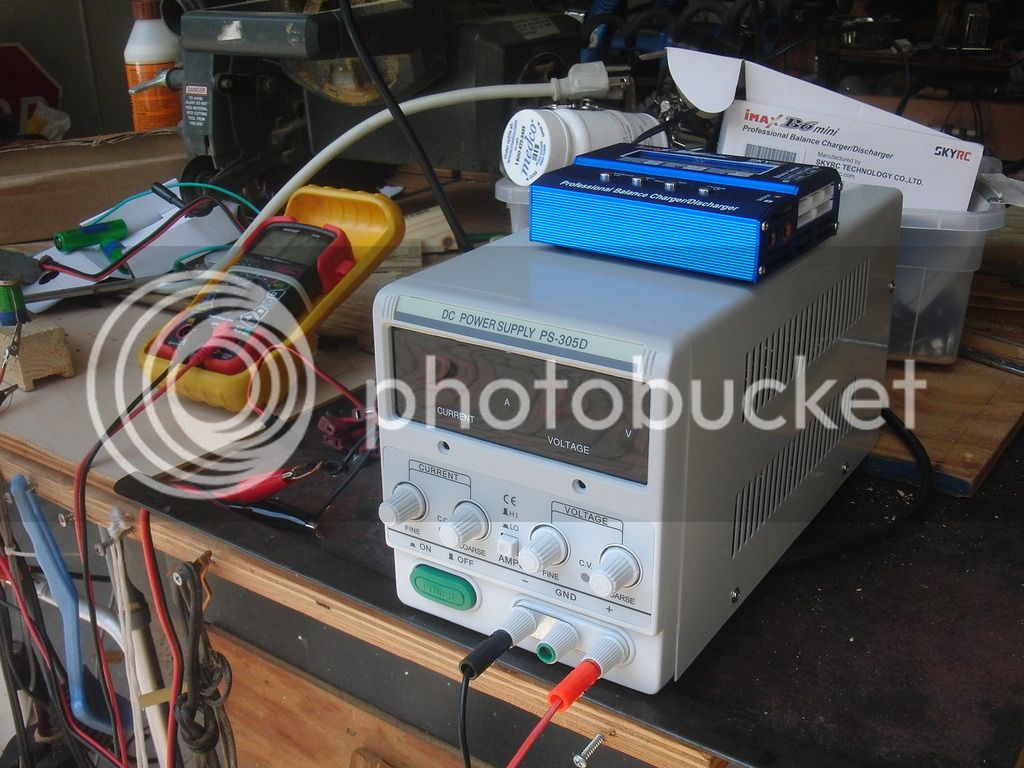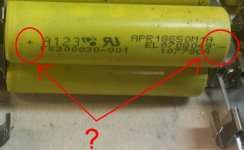Please help me improve my charging system.
I just finished charging my first set of 50 A123 cells, 18650 size. These are all from old Dewalt power tools. There has to be a faster way to do this. The charge took almost a whole day! !
View attachment 1
Equipment:
- 20a lab power supply, selectable for CC or CV
- spring clips
- aluminum door trim molding to hold the clips
- wire to holders - 16 ga
- wire to power supply - 10 ga
Rationale
I decided not to charge the cells in series. Charging in series may cause one cell to overcharge or undercharge. Since these are all used cells with uncertain history, I thought it best to avoid series charging.
The charge goes quick at the beginning, as you would expect using a constant voltage supply, and slows down as the charge nears completion.
I realize now I probably need a different charger. The problem there is, nothing I've seen has the juice to charge 50 cells to 3.65v. Everything I've found would require me to charge them in series as well as parallel.
Katou
I just finished charging my first set of 50 A123 cells, 18650 size. These are all from old Dewalt power tools. There has to be a faster way to do this. The charge took almost a whole day! !
View attachment 1
Equipment:
- 20a lab power supply, selectable for CC or CV
- spring clips
- aluminum door trim molding to hold the clips
- wire to holders - 16 ga
- wire to power supply - 10 ga
Rationale
I decided not to charge the cells in series. Charging in series may cause one cell to overcharge or undercharge. Since these are all used cells with uncertain history, I thought it best to avoid series charging.
The charge goes quick at the beginning, as you would expect using a constant voltage supply, and slows down as the charge nears completion.
I realize now I probably need a different charger. The problem there is, nothing I've seen has the juice to charge 50 cells to 3.65v. Everything I've found would require me to charge them in series as well as parallel.
Katou






